On 4 June 1913, Emily Wilding Davison travelled to Epsom Downs to watch the Derby, carrying two suffrage flags – one rolled tight in her hand, the other wrapped around her body, hidden beneath her coat. She waited at Tattenham Corner as the horses streamed past, then squeezed through the railings and made an apparent grab for the reins of the king's horse, Anmer. In the Manchester Guardian the next day, an eyewitness reported: "The horse fell on the woman and kicked out furiously". News footage shows racegoers surging on to the track to find out what had happened.
Davison suffered a fractured skull and internal bleeding, and as hate mail against her poured in to the hospital, she remained unconscious. She died four days later. Thousands of suffragettes turned out on the London streets dressed in white, bearing laurel wreaths for her funeral. They marched four abreast behind purple banners, urging them all to fight on.
There has always been speculation about Davison's intentions. The return train ticket she was carrying, for instance, offered as evidence that she didn't mean to die. But there's no doubt she was prepared to make dangerous sacrifices for women's rights. As Fran Abrams writes in her book Freedom's Cause, Davison had been imprisoned repeatedly for her suffrage work, had gone on hunger strike and been force fed numerous times.
In 1912, when she and a large number of other suffragettes were imprisoned in Holloway, there was what Davison referred to as a siege – the doors of women's cells were broken down by guards – and she determined that one big tragedy might save her sisters. Davison threw herself over a balcony, was caught by some netting, then immediately tried again, launching herself down an iron staircase. This led to two cracked vertebrae, and a thwack to the head, but the authorities were unmoved. She and the other women continued to be force-fed, regularly and brutally.
In a movement defined by acts of daring, Davison's bravery was extraordinary. A hundred years later, votes for women are long since won in most countries – though not all – and the feminist revolution continues. Campaigners worldwide fight for equal political representation, an end to women's poverty, freedom from sexual violence, control over our own bodies, and – ultimately – for that most basic, yet radical, demand: for women to be treated as human beings. A century after Davison's funeral programme declared "She died for women," what can today's feminists learn from the suffragettes?
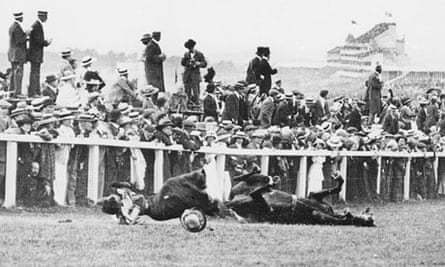
Find your voice, and use it
The dearth of women in public life today is often attributed to a lack of confidence, and the suffragettes sometimes struggled with this too. Margaret Wynne Nevinson, an avid campaigner, once wrote she felt a "dizzy sickness of terror" the first time she stood up to speak publicly, outside a gasworks in south London in 1906. There were shouts of derision as hundreds of men crowded around her, and she almost succumbed to stage fright before hearing a voice whisper: "Go it, old gal, you're doing fine, give it 'em."
This echoes the recollections of Kitty Marion, an actor as well as a suffragette. The first time she sold the Votes for Women newspaper in Piccadilly Circus, Marion wrote, "I felt as if every eye that looked at me was a dagger piercing me through and I wished the ground would open up and swallow me. However, that feeling wore off and I developed into quite a champion."
Sweetness is overrated
Women were bound by feminine ideals at the start of the last century – expected to be submissive, nurturing, self-effacing – and we still are today. The suffragettes weren't having it. As Emmeline Pankhurst, leader of the militant suffragettes, once said, "We threw away all our conventional notions of what was 'ladylike' and 'good form', and we applied to our methods the one test question: will it help?"
This was echoed by Fred Pethick-Lawrence, who fought strongly for women's votes alongside his wife – who was also called Emmeline. In his 1911 book, Women's Fight for the Vote, he offered a rallying cry. "Nothing has done more to retard the progress of the human race than the exaltation of submission into a high and noble virtue," he wrote. "It may often be expedient to submit; it may even sometimes be morally right to do so in order to avoid a greater evil; but submission is not inherently beautiful – it is generally cowardly and frequently morally wrong."
Take strength from the haters
Anyone who writes about feminism online knows there can be a nasty response, and the suffragettes received hate mail too. In Joyce Marlow's essential anthology, Votes for Women, from which many of these recollections are taken, she includes a letter sent to Hugh Franklin, a male suffrage activist, which has a strikingly familiar tone. "We would give you and old Mother Pankhurst (the fossil-worm) Five Years Penal Servitude and then burn you both together. YOU ARE A DIRTY TYKE AND DANGEROUS MADMAN." (All emphases the writer's own.)
But it wasn't just hate mail they had to contend with. Rats would be let loose into suffrage meetings, while rotten eggs and fish were pelted at the women. Nevinson once wrote that they kept their eyesight largely as a result of the huge hats that were then fashionable, the wide brims saving them "from hard missiles and the cayenne pepper blown at us from bellows".
Their detractors were often very powerful. Winston Churchill described the militant movement as a "copious fountain of mendacity", while Arthur Conan Doyle opted for "female hooligans". The only useful response was to take strength from the insults. The current deputy editor of the New Statesman, Helen Lewis, has written that today "the comments on any article about feminism justify feminism", which mirrors Rebecca West's reflections on events of a century ago. "The real force that made the suffrage movement was the quality of the opposition," wrote West. "Women, listening to anti-suffrage speeches, for the first time knew what many men really thought of them."
Accept that those haters will include other women
In a male-dominated society, women are often brought up to identify with men, to see men's views and rights as paramount, and so it's not surprising that many women oppose their own liberation. In the suffrage era the most prominent was Queen Victoria, who once wrote a letter stating she was "anxious to enlist everyone who can speak or write to join in checking this mad wicked folly of 'Woman's Rights', with all its attendant horrors, on which [my] poor sex is bent".
There were a number of thriving anti-suffrage groups, including the National League for Opposing Women's Suffrage, run by one Mrs Frederic Harrison, who stated: "Women have to destroy a women's movement." It rarely feels right to celebrate female failure, but in Harrison's case let's make an exception.
Fortune favours the brave
After a meeting of 30,000 suffragettes in 1906, Emmeline Pethick-Lawrence said she had "never met anyone so fearless as were these young girls. I never saw a suffragette, under menace of violence, otherwise than cool and collected."
Such bravery was necessary, as the women often faced serious violence. On 18 November 1910, for instance, a date which became known as Black Friday, Emmeline Pankhurst led 300 women to the House of Commons in a peaceful protest. There, they were met by police, and reported being beaten and sexually assaulted. One woman, quoted in Marlow's anthology, said: "Constables and plain-clothes men who were in the crowd passed their arms round me from the back and clutched hold of my breasts in as public a manner as possible, and men in the crowd followed their example … My skirt was lifted up as high as possible, and the constable attempted to lift me off the ground by raising his knee. This he could not do, so he threw me into the crowd and incited the men to treat me as he wished." She later had to seek medical attention for the bruising on her chest.
Over the course of the militant campaign, around 1,000 suffragettes were imprisoned in the UK, and many went on hunger strike and had to contend with the torturous process of force feeding. In 1913, the Cat and Mouse Act was brought in, a cruel law which meant suffragettes could hunger strike to the point of emaciation, be let out of prison to recover, recalled to serve a little more of their sentence, on and on, until the term was served.
The suffragettes kept going, despite the opposition and immediate consequences. Abrams describes a London action in the early 1910s when, "on two separate days, at a preordained time and with no warning, hundreds of smartly dressed women from Oxford Street to Whitehall, all along Piccadilly and Bond Street, produced hammers … and laid waste to hundreds of square feet of shop frontage." Emmeline Pankhurst was one of 220 protesters arrested. Modern feminists might balk at some of the suffragettes' more destructive actions, but their audacity is inspiring.
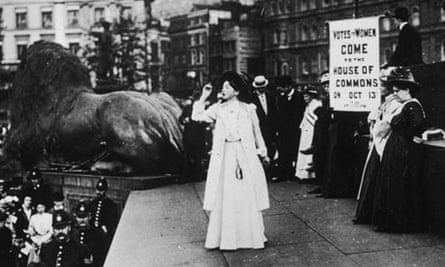
Publicity is power
The suffragettes were a creative whirlwind, constantly devising new ways to catch the attention of politicians and the public. On one occasion, two women posted themselves as human letters to Downing Street; on another, suffragettes boarded a boat, and sailed towards the terrace of parliament, where 800 people had gathered for tea. Once in clear view, they unveiled two banners, the first with details of their upcoming demonstration, the second stating: "Cabinet ministers especially invited."
A report in the Daily Express, in 1909, told of the young suffragette Miss Muriel Matters, who "sailed aloft from Hendon in the diminutive basket of a cigar-shaped dirigible balloon, for the very latest thing in suffragist dashes to Westminster". Matters dropped leaflets as she flew, finally returning to earth near Croydon, helped "by a friendly though rather startled farmer".
The suffragettes staged a census boycott in 1911, during which women stayed out all night, on the basis: "If women don't count, neither shall they be counted." Some took to Wimbledon Common in horse-drawn caravans, others spent the night rollerskating around the Aldwych Rinkeries – the venue was kept open especially – and Davison hid herself in a broom cupboard in the House of Commons, with a small picnic of lime juice and meat lozenges. (Many years later, Tony Benn secretly put up a plaque in this cupboard, in tribute to Davison's extraordinary contribution to democracy.)
If you're trying to create a popular movement, you obviously need to be popular, and the suffragettes were: an estimated half a million people attended their Hyde Park demonstration in 1908. It was the publicity campaigns and the strength of the central message that brought them there, as well as the fact that being a suffragette must have looked exciting, a revolutionary approach to female life. There's often tension today between those who deliver feminism with humour and those who prefer unfiltered anger – the suffragettes showed that both are necessary.
Strength through solidarity
There were often major splits in the suffrage movement but there was also enough solidarity to keep the mission afloat. One strong example arose in 1906, when Millicent Garrett Fawcett, the leader of the non-militant side of the movement, wrote to the Times in support of the militants. "I take this opportunity of saying that in my opinion," she wrote, "far from having injured the movement, they have done more during the last 12 months to bring it within the realms of practical politics than we have been able to accomplish in the same number of years." It was a generous statement from the woman whose conscientious campaigning, over the course of many years, is often credited with being the essential force in the fight for the vote.
Many of the suffragettes also recognised that women could be oppressed by factors beyond their sex, and went to great lengths to support their sisters. For instance, when Lady Constance Lytton was imprisoned in 1909, and quickly released, she was determined to expose the fact that working class suffragettes had faced much more brutal treatment than her. She therefore disguised herself as Jane Warton, a seamstress, travelled to Liverpool and staged a protest; she was imprisoned and force fed eight times, proving her point. This experience did her health no favours, and she went on to suffer a heart attack in 1910 and a series of strokes, but wasn't deterred. Lytton's dedication was such that she once carved a large "V" for "votes" into her own breast, and she continued to campaign for the suffrage cause until her death in 1923.
Never give up
Many feminsts today complain of burnout and fatigue over problems that seem to stretch ahead intractably. The suffragettes must have felt the same at times. Histories often focus on the last 20 years or so of the struggle, but women fought for the vote for more than a century, with Mary Wollstonecraft helping to kick off the campaign in 1792, in Vindication of the Rights of Woman, with a reference to the need for women's political representation. Forty years later, in 1832, the first petition for the women's vote was presented to the Commons, and over the course of the next century campaigners kept up the pressure – reinventing and re-energising their fight, and passing the baton from woman to woman. They were finally granted the vote on the same terms as men in 1928.
Accept victory – nothing else
There are often arguments today about who should represent feminism, but the suffrage fight suggests we need the whole spectrum: the rabble-rousers, theorists, dogged campaigners, sympathetic politicians, those whose wit draws women to the cause, those whose anger keeps them motivated, and those who quietly, conscientiously chip away at issues that make others give up in despair. We need those who refuse to see any conceivable option but victory. Women like the one who wrote to the Daily Telegraph in 1913. "Sir, Everyone seems to agree upon the necessity of putting a stop to Suffragist outrages; but no one seems certain how to do so. There are two, and only two, ways in which this can be done. Both will be effectual. 1. Kill every woman in the United Kingdom. 2. Give women the vote. Yours truly, Bertha Brewster."
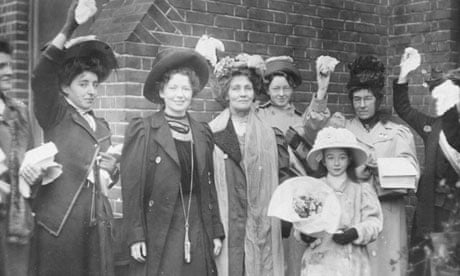





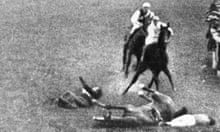
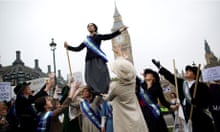
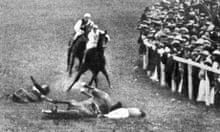
Comments (…)
Sign in or create your Guardian account to join the discussion